


In my 5th visit to Paris, I was determined to see Musee d’Orsay or M’O called by artists and visitors. On the left bank of the Seine, the museum was installed in the former Orsay railway station, Gare d’Orsay. Built in 1900 to designs by Victor Laloux, Lucien Magne and Émile Bénard. It served as a terminus for the Paris-Orléans Railway. It was the first electrified urban rail terminal in the world, opened 28 May 1900, in time for the 1900 Exposition Universelle. “So the building itself could be seen as the first “work of art” in the Musee d’Orsay, ” displaying collections of art from the period 1848 to 1914. 



Practical information : Museum opens from Tuesday to Sunday 9.30am to 6 pm. Thrusady,like Louvre, this museum also opens till late 9.45 pm. It is connected by Metro: line 12, to Solférino , RER: line C, to Musée d’Orsay and by Bus: 24, 63, 68, 69, 73, 83, 84, 94. From Saint lazare gare, best to take bus 24 and from opera 68 /69. Museum has 2 cafes and one restaurant, but they are usually packed and we preferred seeing the works in stead of eating inside. Outside has some nice places to eat as well, and not too expensive.

It took Thomas Couture three years to complete The Romans of the Decadence the proportions of which betray grand artistic ambitions. He wanted to give fresh impetus to French painting and to do so referred, rather conventionally, to the masters of ancient Greece, the Renaissance and the Flemish school. The work is a history painting, regarded as the noblest genre during the 19th century: it therefore had to represent human behaviour and convey a moral message. This was explained by Couture himself, who quoted two lines from the Roman poet Juvenal, (c. 55-c.140 AD) in the catalogue for the 1847 Salon where the painting was exhibited: “Crueller than war, vice fell upon Rome and avenged the conquered world”.


Gustave Moreau: Galatea(Left) Pierre Bonnard: Child Making a Sand Castle(Right)






Jean Auguste Dominique Ingres The Spring (Left) Edward Burne-Jones :The Wheel of Fortune (Right)




This scene, dated 1849, shows the first ploughing or dressing, which was done in early autumn to break the surface of the soil and aerate it during the winter.
Attention is focused on the first team of Charolais-Nivernais cattle, whose light russet and white coats gleam in the cold, pale light. It is primarily an animal painting, and the heroes are the oxen themselves, leaving little room for the men: the cowherd is a diminutive figure. It is a hymn to agricultural labour, whose grandeur was magnified because, in these post-revolutionary days, it was easy to contrast with the corruption of the city. It is also tribute to provincial regions – here the Nivernais, with its agricultural traditions and rural landscapes.




Constant Troyon Gamekeeper(left) Frédéric Bazille The Pink Dress(right)


Henri de Toulouse-Lautrec Justine Dieuhl (Left) Maurice Denis: Princess Maleine’s Minuet (Right)

Before his early death in battle during the Franco-Prussian war in 1870, Frédéric Bazille ,during a summer holiday in the family home at Méric, near Montpellier, worked on this motif in a fairly large painting showing ten of his close family gathered on the terrace, and adding himself at the far left of the painting.The strong contrasts show Bazille’s liking for the light of the South of France.
Almost all are looking towards the spectator as if at a camera. As a result, although it is a group portrait of family life, the postures are rather stiff. Bazille reworked the canvas extensively during the winter and returned to it again a year later after it was shown in the Salon, replacing little dogs with a contrived still life. These hesitations and compromises probably explain why his painting was accepted by the Salon in 1868 while Monet’s more daring compositions were refused. Bazille was surprised by this, modestly writing that the jury had accepted him “I don’t know how, probably by mistake.”




James Tissot Portrait of Miss L. L.(left) Paul Cézanne Portrait of Achille Emperaire(Right)


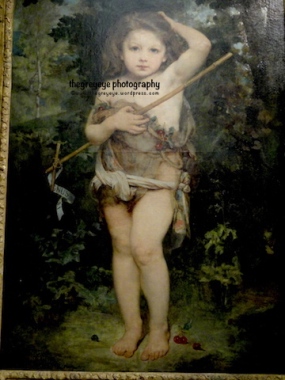





Maurice Denis The Muses (Right)


Albert Edelfelt Louis Pasteur (Left)


Aristide Maillol Woman with a Parasol(right)




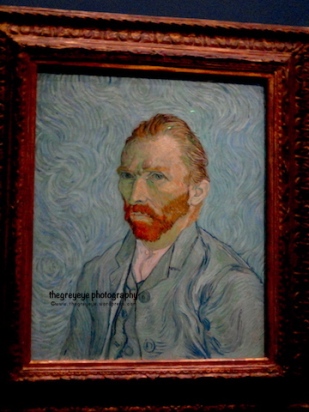
Vincent van Gogh Fritillaries(Left) Self-Portrait(Right)

Most probably this is the most famous painting in this museum. In April 1888, he wrote to his brother Theo: “I need a starry night with cypresses or maybe above a field of ripe wheat.” In June, he confided to the painter Emile Bernard: “But when shall I ever paint the Starry Sky, this painting that keeps haunting me”.
He first painted a corner of nocturnal sky in Cafe Terrace on the Place du Forum, Arles (Otterlo, Rijksmuseum Kröller-Muller). Next came this view of the Rhône in which he marvellously transcribed the colours he perceived in the dark. Blues prevail: Prussian blue, ultramarine and cobalt. The city gas lights glimmer an intense orange and are reflected in the water. The stars sparkle like gemstones. The Musée d’Orsay’s Starry Night is more serene, an atmosphere reinforced by the presence of a couple of lovers at the bottom of the canvas.
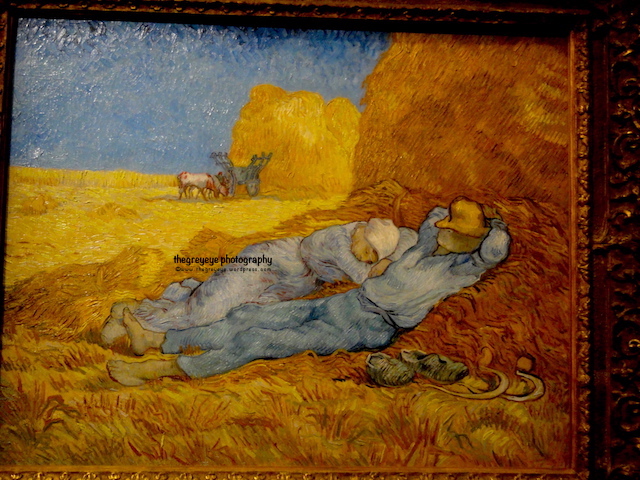




Georges Seurat The Circus(Left)

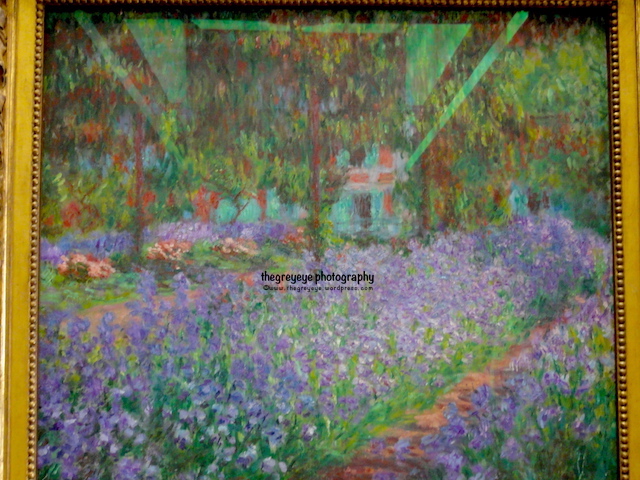




Trained first in Montauban and then in Toulouse, Bourdelle started work as an assistant in Rodin’s studio. From 1905, Bourdelle sought to simplify his lines: “Contain, maintain and master are the rules of construction,” he told his pupils over and over again. He looked to mythology for many of his subjects such as Hercules the Archer which enabled him to experiment on a large scale. In his own terms, Apollo was “undertaken in an attempt to master the purest aspect of my deep vision, going far beyond all past flights, I brought to it – more than human blood, bone, cartilage and muscles – the enveloping structure of its forces.”

Maillol started his career as a painter, then designed tapestries and made decorative wooden objects in the Art Nouveau style. His first sculptures date from 1895-1896. The first were three small reliefs, carved in roundels of wood complete with the bark, and highlighted in colour: this Dancing Woman, a Woman with a Mandolin and a Woman Sitting in a Thoughtful Pose, which is in the Musee Maillol.

For many years, Pompon was one of the most sought-after assistants in Paris, hewing blocks of marble for Auguste Rodin and Camille Claudel. But after 1905, in reaction to Rodin’s expressionism, Pompon abandoned the human figure and turned to the animals focused on “the very essence of the animal”. Polar Bear is the finest achievement of his, when it was exhibited at the Salon d’Automne in 1922, it brought the artist tardy recognition, at the age of sixty-seven.




The square in front of M’O represents six bronze allegorical sculptural group in a row, originally produced for the Exposition Universelle:
- South America by Aimé Millet
- Asia by Alexandre Falguière
- Oceania by Mathurin Moreau
- Europe by Alexandre Schoenewerk
- North America by Ernest-Eugène Hiolle
- Africa by Eugène Delaplanch
Disclaimer: Histories of paintings: source : M’O website
©thegreyeye.wordpress.com, 2018-21. Unauthorized use and/or duplication of this material without express and written permission from this blog’s author and/or owner is strictly prohibited. All rights reserved.













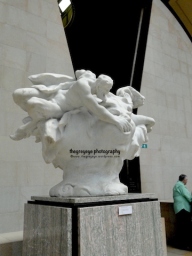






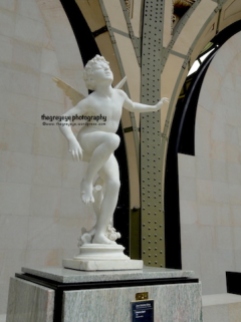

















Thanks for the trip through the museum. I particularly like the clock image.
LikeLiked by 2 people
Thank you, it is a post after long time. I hope you all are great !
LikeLike
Missed the Musee d’Orsay when I was there…next time hopefully! 🙂
LikeLiked by 2 people
Sure , worth seeing !
LikeLiked by 1 person
Love the Musee d”Orsay thouhg haven’t been for quite a few years. The colours in the Van Gogh paintings were of exceptional briliance – I remember the blues and yellows especially. The whole museum is very well set out and I could have spent hours there!
LikeLiked by 2 people
Yup, too much to grasp in a day. But unless I live in Paris for 6 months I ll not be able to finish the museums 😂
LikeLiked by 1 person
Well done 🙂 ! Nice post. This place I love! Thank for reminder me my visit a couple years ago. have a nice summer. Bye. Kamila
LikeLiked by 2 people
Thanks Kamila, nice to hear from u
LikeLike
Lovely series!
LikeLiked by 2 people
Thank you. I hope u r doing great too
LikeLiked by 1 person
Thanks, not bad – Happy Days! Lovely weather etc 🙂
LikeLiked by 1 person
Nice post..long time ya!
LikeLiked by 2 people
Yup, not getting much time to finish the posts 😊
LikeLiked by 1 person
Beautifully written..and some wonderful clicks out there.. I too was in Paris with my family very recently and We just loved the vibes there.. I would like to share my whole Paris experience here and by the time you gonna end reading this write up, you will be in even deeper love with Paris,I guarantee ! 🙂
#MinimumText #MaximumPhotographs #JustGoogle : #InsideOutwithRahulYuvi
https://the-passport-souls.travel.blog/2018/07/06/paris-among-the-most-loved-tourist-city-for-a-reason-europe-travel-series-blog-1/
LikeLiked by 1 person
Very interesting museum! Thank your for sharing , I much enjoyed your post.
LikeLiked by 1 person
O, I love this museum!!!!!!! It’s amazing
LikeLiked by 2 people
Me too 🙃😊
LikeLike
Thanks for the lovely images from my favorite museum ever!
LikeLiked by 2 people
This is a beautiful travel review, and a real treat. Thank you for the highlights!
LikeLiked by 1 person
Such an amazing museum!
LikeLiked by 1 person
Thank you, it certainly is
LikeLike
your pictures made the paintings look better!
LikeLiked by 1 person
Thank you for the complement 😁
LikeLiked by 1 person
your welcome. and it’s the truth 🙂
LikeLiked by 1 person
Thanks for sharing. This is our favourite museum in Paris. In 2017, we skipped the crowded Louvre and headed here. Love the sculpture work there, as well. Allan
LikeLiked by 1 person
I like it too. Louvre is too big. I was lucky when I went to Louvre it was winter and practically no crowd, but still it is impossible to see the whole museum in one visit. You made a wise choice 🙂
LikeLiked by 1 person
Beautiful post 😍
LikeLiked by 1 person